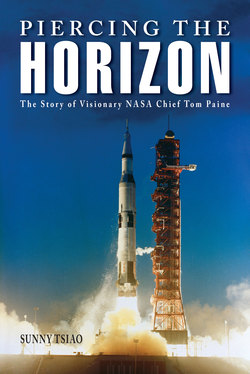Читать книгу Piercing the Horizon - Sunny Tsiao - Страница 10
На сайте Литреса книга снята с продажи.
FOREWORD
ОглавлениеWith the publication of this book, Purdue University Press proudly inaugurates Purdue Studies in Aeronautics and Astronautics, a new family of scholarly books dedicated to the study of flight—both in the atmosphere and in space—in historical, social, technological, political, cultural, and economic contexts.
As readers of the books in our series will learn, the study of aeronautics and astronautics concerns much more than just the nuts and bolts of airplanes and spacecraft. It involves much more than just the history of propellers and wings, more than the history of landing gear and jet engines, more than the ornithology of P-51s and Space Shuttles, or the genealogy of X-planes, rockets, and missiles. The study of aeronautics and astronautics is just as much a story of people and ideas as are studies dealing with any other topic related to society and culture. Without question, scholars who write about aeronautics and astronautics have a lot to say about the research, design, building, flying, maintaining, and utilizing of airplanes, aerospace vehicles, and spacecraft, but their studies are no less human, no less connected to social or political or aesthetic forces, because they deal with technical things. As our books in this new series will demonstrate, an advanced study of aeronautics and astronautics will tell us a great deal about our existence as a thinking, dreaming, planning, aspiring, and playful species.
This first book in the new series is a biography of Thomas O. Paine (b. 1921–d. 1992), one of America’s greatest spaceflight visionaries. Not only was Dr. Paine the man who headed the National Aeronautics and Space Administration during the period of the United States’ early manned lunar landings in 1969 and 1970, but he also was deeply involved in preparing plans for the post-Apollo era at NASA. We have many biographies and autobiographies of astronauts and many general, administrative, and technological histories of the US space program, but we have too few critical works on the principal managers and bureaucrats responsible for leading and directing the US space program. Fortunately, we now have a close look at the outstanding career of Thomas Paine. Sunny Tsiao offers a penetrating look into Paine’s significance as a major figure in the US space program, placing it into the broader context of space history, NASA history, the history of science and technology, American history, and the history of the Space Race.
As with all the publications in our new series, this book should be of interest to a wide group of people, including aerospace scholars, space exploration enthusiasts, those interested in the history of the federal government and federal science and technology planning and management, and the many thousands of people in government, industry, and academe who today are exploring the ways and means of humankind’s future in air and space.
JAMES R. HANSEN, PHD Series Editor Purdue Studies in Aeronautics and AstronauticsPurdue University Press
